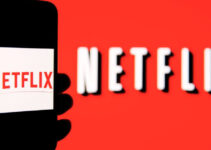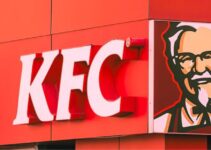Gucci is a multinational luxury fashion company in Italy. Guccio Gucci founded the fashion brand in 1921. The company has established a network of approximately 528 retail chain stores in various countries across the globe. Today, we’ll discuss the market analysis of Gucci; it focuses on goals and objectives, market landscape in terms of size and traffic, competitors analysis, target audience demographic, customers needs and demands, and SWOT analysis.
Market Analysis of Gucci
Let’s discuss the market analysis of Gucci; some of the main elements and components of Gucci’s market analysis are as follows;
Goals and Objectives of Gucci
Gucci has a wide range of targets, goals, and objectives that focus on sustainability, culture, and purpose. Some of their main targeted areas are as follows;
People Goals
- Building and encouraging gender equality and diversity
- Supporting and facilitating craftsmanship culture continuously
- Sustainable teams are focusing on the collaborative working environment
- Making a positive social impact
- Facilitating transformation across the entire supply chain network
Planet Goals
- Sourcing the raw materials and supplies sustainably, building eco-friendly solutions by launching innovative technology
- Complete transparency to the raw material sources by 100% tracking to the original sources,
- Making 100% alignment with the environmental sustainability standards
- Reducing the carbon impact over the entire supply chain and value chain network ranging from raw material, production, marketing, and sales
- Building and maintaining a 100% renewable source of energy in accordance with RE’s 100 guidelines and standards
- Decreasing the greenhouse gas emission rate by 1,2,3 GHG protocol
- Facilitates and supports the decarbonization of Gucci
Social Responsibility Goals
- Improving the lives of people, especially the under-valued members of the community across the globe
- Facilitating and supporting the conservation and restoration of the global ecosystem
- Promoting the circular approach and decreasing the wastage of resources
- Optimizing efficiency during production and manufacturing processes with creative strategic approaches
- Implementing renewable sources of energy to achieve cost-efficiency
- Focusing on sustainable sourcing and building innovative on-ground programs
- Improving low-impact alternative
Market Landscape of Gucci
According to an estimate, the market brand value of Gucci will be approximately 17.8 billion USD by the end of 2023 in the fashion industry. The luxury fashion brand has established a network of approximately 528 retail chain fashion stores in various countries across the globe. The target customer market of Gucci is from countries and regions like Asia Pacific, Western Europe, North America, Japan, and others.
Competitors of Gucci
Some of the top competitors of Gucci in the luxury fashion industry are as follows;
- Suncloud
- Bolle
- CTS Wholesale Sunglasses
- Kaenon Polarized
- Oakley
- Guess
- Armani
- Dolce and Gabbana
- Balenciaga
- Chanel
- Versace
- Bulgari
- Prada
- Louis Vuitton
Target Audience Demographic of Gucci
The target audience demographic details of Gucci in the luxury fashion retail chain market are as follows;
- Age: 18 to 65 years old
- Gender: men and women
- Income: upper medium to higher
- Employment: well off financially
- Education Level: medium to higher and fashion-aware
- Social Media Activity: high proactive on social media
The demographic details of Gucci show that the company’s target audience is both men and women. They belong to various age groups and they have a great interest in luxury fashion designs and styles. However, they want to express themselves creatively by wearing unique luxury fashion designs and styles.
Gucci Customer’s Needs and Preferences
The needs, demands, interests, and preferences of the target audience of Gucci are variable depending on various factors. Usually, they’re brand conscious and quality conscious and they want to procure luxury fashion apparel that are unique and creative designs. The luxury fashion brand puts a great emphasis on craftsmanship, and so do their customers and they value and admire the craftsmanship.
SWOT Analysis of Gucci
Some of the main strengths of the luxury fashion brand Gucci are as follows;
- Great experience in the luxury fashion industry for the past over 100 years
- Strong brand recognition and brand recall rate
- Loyal and qualified team of creative directors and designers
- Strong presence in the global fashion market
- Powerful social media engagement over various platforms
- Offering a wide range of fashion apparel, products and accessories
Let’s discuss the main weaknesses of the fashion brand Gucci are as follows;
- Limited investment in research and development
- Heavily relying on the luxury fashion market as its main source of revenue
- Ineffective marketing and advertisement campaigns
- Low access to the global customer market
Some of the main available opportunities to the fashion brand Gucci are as follows;
- Expanding its business operations in the e-commerce industry
- Launching more products and services
- Ethical fashion and environmental sustainability
- Entering into the new emerging and developing markets
Let’s discuss the potential threats to the fashion brand Gucci are as follows;
- Tough competition in the global fashion industry
- Counterfeiting issues impacting the company’s brand reputation
- Changing customer market trends and preferences
- Regional political issues impacting the supply chain and distribution network
Conclusion: Gucci Market Analysis | Market Analysis of Gucci
After an in-depth study of the market analysis of Gucci; we have realized that Gucci is the world’s leading luxury fashion brand. If you are learning about the Gucci market analysis; then you should keep in mind the abovementioned goals and objectives, market landscape in terms of size and traffic, competitors analysis, target audience demographic, customers needs and demands, and SWOT analysis.

Ahsan is an accomplished researcher and has a deep insight in worldly life affairs. He goes Live 3 days a week on various social media platforms. Other than research writing, he’s a very interesting person.


